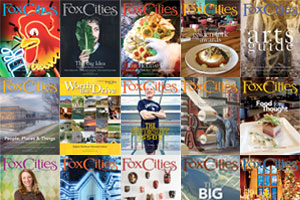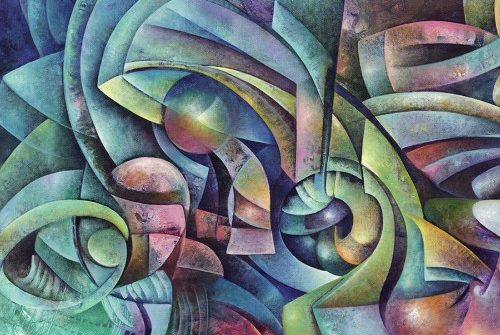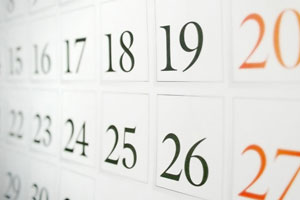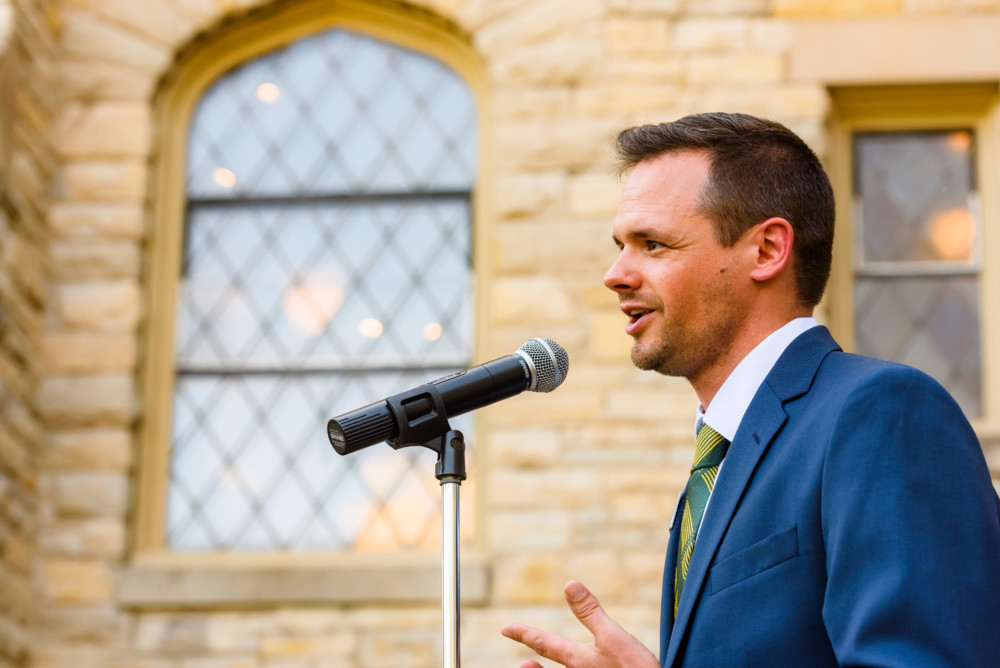Wisconsin Slang
Ope! Exploring the colorful and creative vernacular of our state
The language that we speak is the tool that we use to communicate with those around us. Even though English is the most commonly used language in the United States, it is spoken differently depending in which part of the country you live. The slang that we use here in the Fox Valley, or Wisconsin for that matter, is unlike any other. If you were to ask someone in California where the “bubbler” is, there will likely be some confusion.
In order to understand why Wisconsin’s slang is unique, we must look at the communities that made Wisconsin their home centuries ago. Dustin Mack, chief curator at Appleton’s History Museum at the Castle, enjoys investigating the origins of words as they aid in shaping a historical understanding of any given community.
“Language is so adaptable that its history can provide a snapshot in time. The slang we use, our dialect, and the meaning of words is a great representation of the cross-section of peoples and cultures that make Northeast Wisconsin what it is today,” he says.
Etymology, the history of words, explains the meaning of words as well as how they originated. Mack believes that studying etymology helps us better understand the present by educating us on the historical usage of language.
“Each word has its own unique story to tell about the past. Most new words get their start as a modification of an existing word or combination of two existing words,” Mack says. “When we are confronted with new people, places and things, we often relate those new experiences with something we are more familiar with.”
Joseph Salmons, an editor of “Wisconsin Talks” and a professor in language sciences at UW-Madison, believes that the origin of slang isn’t necessarily transparent.
“People have a sense that we know where words come from, but we actually don’t,” Salmons says. “Slang is a place where that is dramatically true. With friends and family, you develop unique expressions and phrases within meaningful contexts which can ultimately bubble up to societal level.”
While this is undeniably true, Salmons explains that there are a few popular slang words that prove to be exceptions. Bubbler, a word that should be familiar to most Wisconsinites, has an origin that can be easily traced. Synonymous with water fountains, the term bubbler originated from Kohler Co. In the 1920s, Kohler Co. manufactured a bubbler valve drinking fountain which was marketed in Wisconsin as well as Northeast Massachusetts and Melbourne, Australia. Salmons discovered this upon attending a conference in Australia where, to his shock, people there used the term bubbler to refer to a water fountain.
Interestingly, Salmons explains that there is a significant mismatch between what people associate with a place and what people actually say. “If you ask people what is distinctive about Wisconsin, people will usually say bubbler. These people living in Wisconsin associate it with their state, yet they don’t say it themselves.”
Unlike bubbler, the word “ope” doesn’t have a definitive origin, although it is commonly associated with the Midwest. Ope is used as a reaction to something unexpected. Salmons explains that ope fits within the established language pattern of expressions such as “yep” and “nope.”
“When we want to emphasize something, there is a tendency for us to add extra sounds in our sentences,” he says. “Ope was ‘oh’ and people stuck a ‘p’ on it to make it more like yep and nope.”
Ope is influenced by the word “oops,” although they can both be used differently.
Fox Valley colloquialisms have actually been portrayed in popular culture. Lou and Peter Berryman, a folk songwriting duo, released “Squirrelly Valley” in 1980. This song is an over-the-top ode to how people in the Fox Valley speak and is filled with phrases people associate with the Fox Valley, such as “give me a beer once” and using “dim” and “der” for them and their.
Much of the slang we use in Wisconsin is linked to German immigrants who settled in the eastern part of the state. Luanne Von Schneidemesser, the senior editor of the Dictionary of American Regional English, further explains the significant influence that Germans had on Wisconsin slang. Germans were the largest group of immigrants in Wisconsin who, according to Von Schneidemesser, switched to English over time while retaining German words. Consequently, the German words that they held onto spread to non-German immigrants.
A famous example of German-influenced slang given by Von Schneidemesser is the word “brat.” The shortened version of bratwurst, brat is commonly used in Wisconsin, while the full word is regularly used in all other states. Another German example of Wisconsin slang is “aina,” a contraction of “ain’t it.” This is otherwise known as a tag question.
Similar to ope, tag questions are colloquialisms that help set the tone of a sentence. Essentially, people use tag questions to ensure that someone is listening to them and that they can engage in a response. An example of a tag question commonly used in the Fox Valley is, “Will you come here once?” The tag “once” is distinctive to eastern Wisconsin and originates from German immigrants.
“When you use an imperative command in German, it sounds like a military command, something you wouldn’t use in normal conversations,” Salmons explains. “In German, there are articles thrown in to soften what a speaker is saying. ‘Once’ translates softly, so immigrants transferred it over and it stuck around.”
German immigrants have shaped the way that we talk today, although variations in languages started occurring much earlier due to the intermingling of ethnic groups.
According to Mack, “American Indian languages borrowed from one another and eventually from French, Spanish and English. Those European languages adopted and repurposed words from Native vocabulary as well. This same phenomenon continued as immigration and migration patterns brought German, Polish, Norwegian, Dutch, African American, Hmong — the list could go on and on.”
Although the evolution of language is studied through a historical lens, language is still changing and will continue to change as society adapts to new technology.
“Since language is always changing and evolving, new words regularly enter our vocabulary,” Mack says. “The internet seems to have sped up this process by allowing people from throughout the country and across the globe to interact.”
The people and events of the past have shaped the way we speak in the present. It is crucial to recognize how the various languages brought to Wisconsin by immigrants have aided in forming slang. Wisconsin’s slang is rather quirky, aina?














Leave a Comment